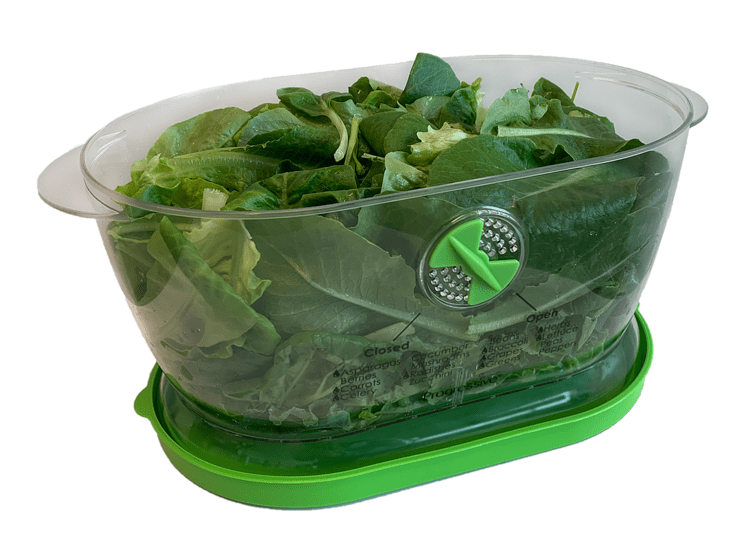Jun 16, 2022
Reusable, Zero-Waste, Raw & Cardboard: 4 Solutions To Plastic Packaging
Editor’s Note: In recognition of Plastic Free July, the team at Agritecture wants to celebrate CEA businesses that are making an active effort in reducing their plastic usage and rethinking food packaging/food distribution.
Plastics are everywhere.
They’ve consumed our daily lives, and now they’ve even found a way into our diets.
The issue of plastic pollution is not to be taken lightly. According to the Plastic Pollution Coalition, it is estimated that by 2050, there will be more plastics in the oceans than fish by weight.
And, with the numerous challenges in recycling plastic, this problem has never been more pressing.
“From poisoning and injuring marine life to disrupting human hormones, from littering our beaches and landscapes to clogging our waste streams and landfills, the exponential growth of plastics is now threatening the survival of our planet. ”
The Role Plastics Play in CEA-Grown Produce
Over the past few decades, plastics have made their way into greenhouses, nurseries, and farm environments.
According to a report by the American Plastics Council, this material has enabled growers to cut costs and increase productivity, particularly through earlier crop production, higher yields per acre, control of some pathogens, increased transplant survival, reduction of nutrient loss, and a more efficient use of water and fertilizers.
Seeing all these numerous benefits plastic has brought us, it’s important to consider how we can not just rid the world of plastics, but instead create affordable alternatives to do the same job as plastics more sustainably.
Food packaging, which is often designed to be single-use, is one of the biggest polluters and therefore a good place to start.
According to the US Environmental Protection Agency (EPA), food and food packaging materials make up almost half of all municipal solid waste. In 2014 alone, out of the 258 million tons of municipal solid waste generated in the US, more than 63% was packaging materials.
Let’s take a look at some food brands using their creative thinking to innovate new food packaging options.
“Doing Local Right” With Farm.One

Farm.One’s reusable plastic containers; image sourced from Farm.One
With their weekly subscription program offering leafy greens, mushrooms, smoothies, and plant-based milks to “thoughtful New Yorkers,” former Agritecture client Farm.One aims to “do local right” by rethinking how they deliver and what they deliver their produce in.
According to the company, “by growing locally we eliminate food miles, and by growing to order we eliminate food waste.” But, this is only one part of the equation; the other part is food distribution.
In examining their processes to eliminate single-use plastic wherever possible, Farm.One decided to use sturdy and reusable delivery bags and containers. They then retrieve these vessels each week as they deliver that new week’s supply of produce.
According to Farm.One, “this saves around 156 plastic clamshell containers per person every year.” To further reduce their carbon footprint, Farm.One’s team delivers by bike to Manhattan and Brooklyn, avoiding the commonly used refrigerated trucks and planes that contribute to our worsening emissions crisis.
Saving Packaging Waste With Dream Harvest Farms

Dream Harvest’s reusable containers; image sourced from Dream Harvest
Farm.One isn't the only CEA business utilizing reusable containers; former Agritecture client Dream Harvest, based in Houston, is another.
Delivering straight to the customer’s door, Dream Harvest uses reusable zero-waste containers. According to the company, these containers help increase the average shelf life of your leafy greens from 3 days to 21 days allowing for almost 0% food waste.
This packaging choice contributes to Dream Harvest’s overall mission of being more sustainable. Alongside reducing landfill waste with these reusable containers, the farms are operated by 100% Texas wind energy, use 95% less water than an outdoor farm, and don’t use pesticides.
Attracting Customers With InFarm’s RAW Packaging

InFarm’s bordeaux basil packaging; image sourced from Avi Bohbot
The vertical farming company InFarm is using more sustainable food packaging and attracting more attention to their produce.
With the help of graphic designer Gila Kaplan, InFarm has created what they call a “RAW paper-cone” packaging for their catalog of “more than 65 herbs, microgreens, and leafy greens,” ranging from “common varieties like Coriander, Basil, or Mint, to specialty products like Peruvian Mint, Red Veined Sorrel or Wasabi Rucola.”
This playful packaging uses bold handwritten typography and ink-drawn leaves on a craft material to “communicate freshness while revealing the plant’s roots as a key visual component.”
InFarm’s creative packaging is setting a new aesthetic for leafy greens and herbs.
Smallhold Is Minimizing Their Packaging

Smallhold packaged lineup available all over NYC and Austin; image sourced from Smallhold
Not only does Smallhold produce mushrooms for a growing niche market by creating a modular system that meets demand where it’s at, they do it with minimal packaging.
Their latest line of store-shelf packaging is simple cardboard boxes with open windows through which customers can see and touch the mushrooms. Some of Smallhold’s produce comes with plastic windows inside the cardboard boxes due to specific requirements of some of their retailers. Will there come a time soon when major retailers request that their suppliers instead use sustainable plastic alternatives?
The team at Smallhold says that “we harvest and package each mushroom with as much love and as little plastic as possible, employing local labor in a local farm to create tastes tailored to you and your friends.”
Packaging is one of several sustainability categories that we analyzed in our 2021 Global CEA Census!


